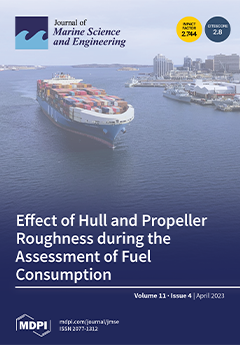This study aimed to investigate the effects of different water velocities on the growth performance, blood physiology, and digestive capacity of coral trout (
Plectropomus leopardus) in a Recirculating aquaculture system (RAS). One hundred and twenty healthy, uniformly sized coral trout (body
[...] Read more.
This study aimed to investigate the effects of different water velocities on the growth performance, blood physiology, and digestive capacity of coral trout (
Plectropomus leopardus) in a Recirculating aquaculture system (RAS). One hundred and twenty healthy, uniformly sized coral trout (body mass (92.01 ± 8.04) g; body length (15.40 ± 0.65) cm) were randomly assigned to three flow velocity groups (1 bl/s, 2 bl/s, and 2.5 bl/s) and one control group (0 bl/s). The results show that the weight gain rate (WGR) and specific growth rate (SGR) of coral trout in the 2.5 bl/s water flow velocity group were significantly lower than those in the control group and 1 bl/s water flow velocity group (
p < 0.05), while their feed coefficient (FC) values were significantly higher than those of the control group and 1 bl/s water flow velocity group (
p < 0.05). The blood glucose (GLU) concentration of coral trout in the 2 bl/s water flow velocity group and the 2.5 bl/s water flow velocity group significantly decreased compared to those in the control group (
p < 0.05), while the lactic acid (LD) concentration increased. As the cortisol (COR) concentration and lipase (LPS) enzyme activity of coral trout did not significantly change (
p > 0.05), the α- AMS enzyme activity significantly decreased (
p < 0.05). Under 2.5 bl/s water flow velocity, the intestinal structure of coral trout changed, and the number of goblet cells decreased. High-water flow velocities affect the physiological homeostasis and intestinal digestion of coral trout, resulting in a decrease in their growth performance, indicating that coral trout is more sensitive to high-water flow velocities. In actual RAS aquaculture, the flow rate should be controlled within 1 bl/s.
Full article





